Supporting a Revolution: Underpinnings or the lack thereof
No More Underwear!
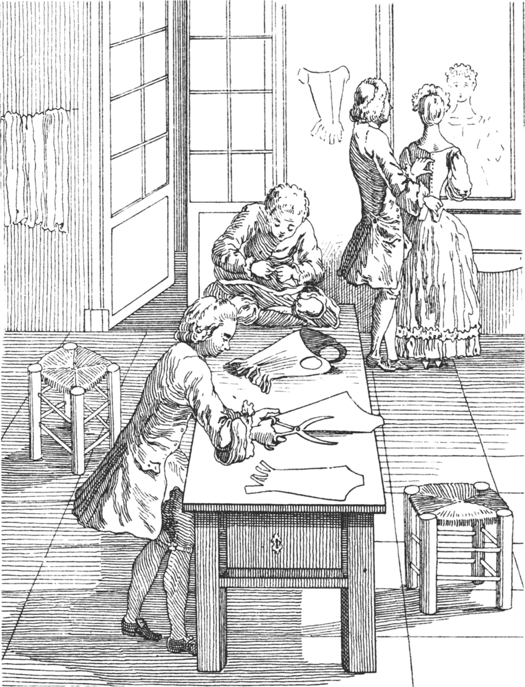
Women’s clothing before the Directoire phase of the French Revolution, that is before around 1795, relied on a complex architecture of petticoats, panniers, pads, and stays. These underpinnings were typically rigid and inflexible because they were constructed using stiffening tools such as whalebone (baleen), reed, and metal – hence the English word “stays”.
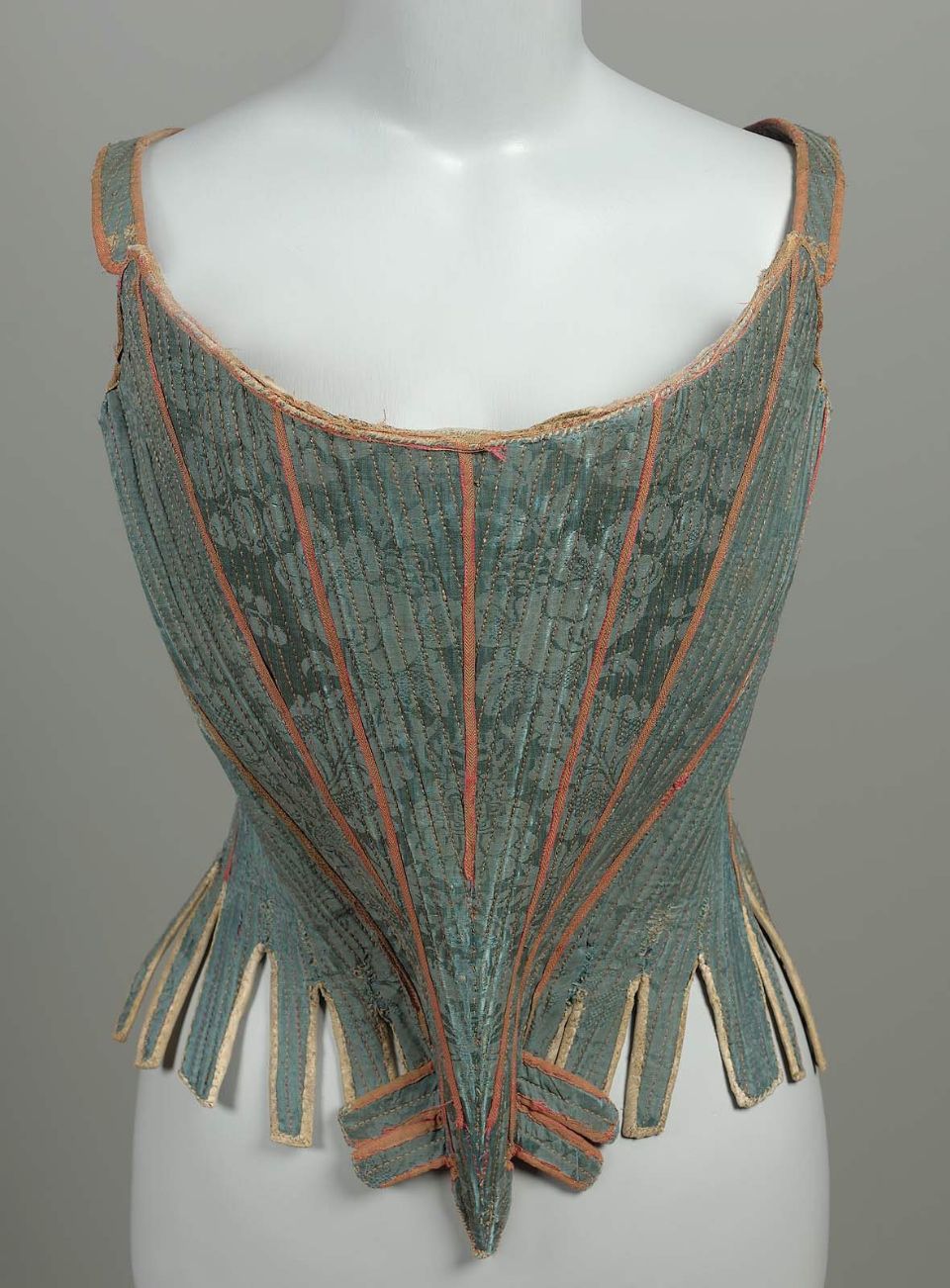
As the Journal des dames et des modes dramatically reveals, however, in a scant two years, by 1797, fashionable French women had staged an underwear revolution of their own. They both abandoned traditional undergarments, and adopted sheer, if not transparent, fabrics for clothes which were a fraction as full as they had been. Until 1804, when women’s fashion began a twenty-year return to earlier norms, the female form was publicly visible.
New Look
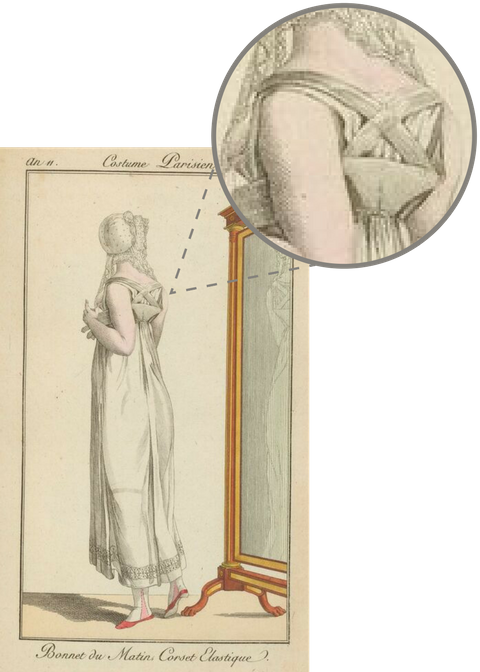
The popularity of new silhouettes changed everything. As skirts rose to right under the bust, there was no longer a need for stays to winnow away the waist. New styles strove to achieve a “natural” silhouette, which required underpinnings which would not deform women's natural shape. This called for new materials and advances in construction. One such technology is the advent of "metal elastique," a rigid, yet expandable material made from tightly coiled metal wires. This clever application of mechanical materials to undergarments can be attributed to the 1763 patent of the coiled spring, and can also be seen used in jewelry depicted in the Journal.
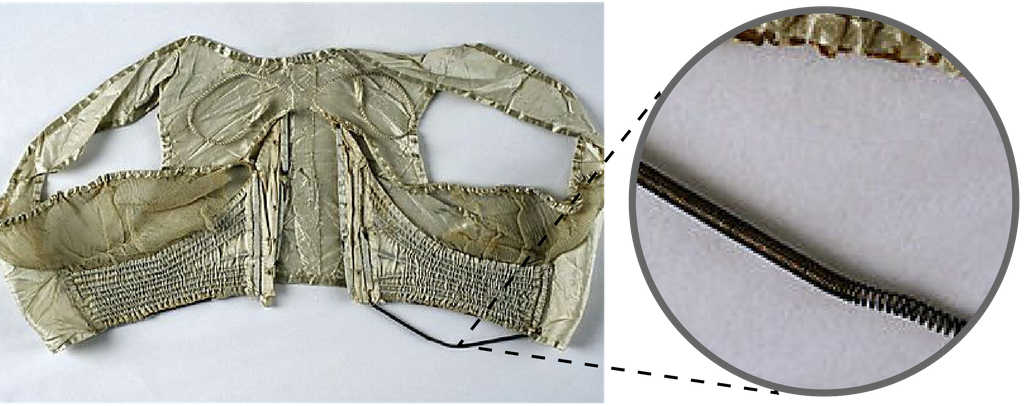
Corset styles
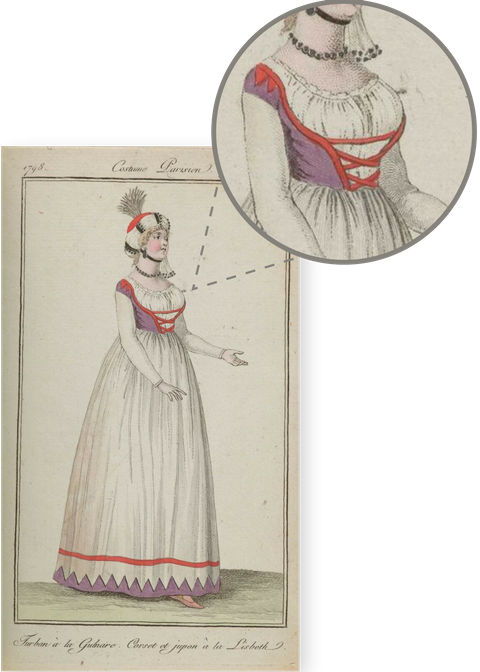
Inspiration changed quickly and was taken from whatever novelty was trending at the moment. Whether it was political, historical, or theatrical- nothing was off limits to influence women's dress. In this plate, we see the "Lisbeth corset" so named after Mme. Saint-Aubin, an actress who played the part of Lisbeth in a Favières and Grétry comic opera.
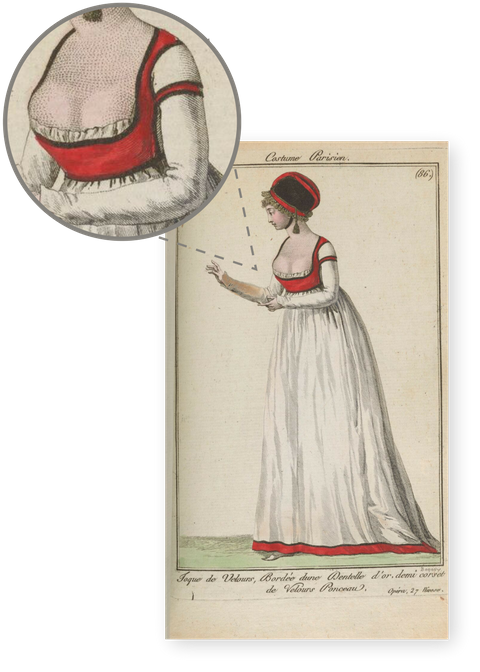
These styles, though dubbed as 'corsets' by the Journal, were terms used somewhat interchangeably with 'bodice' and served more decorative purposes, rather than as support garments.
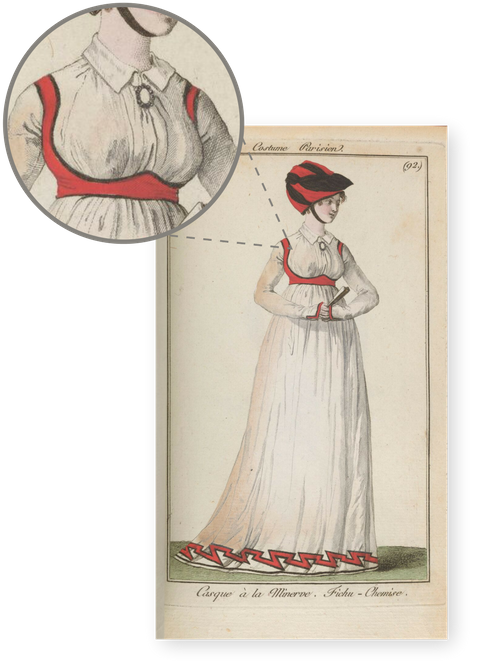
Soon, women's underpinnings began to migrate from underclothing to outer clothing.
The Sexuality of Underwear
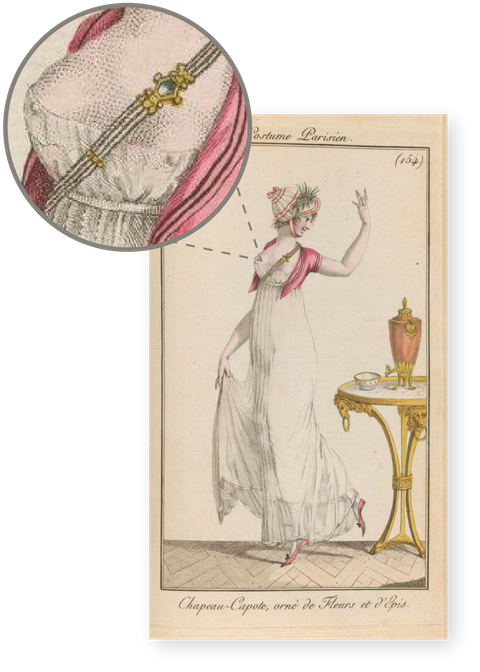
For most observers, though not all, women’s Directoire and Consulat rebellion against traditional underwear signalled a radical revolution in morality. No one had expected women would cease wearing petticoats or stays, and many people were shocked by the sexuality of this choice. The effect was very much reinforced by how narrow and light women’s clothing became.
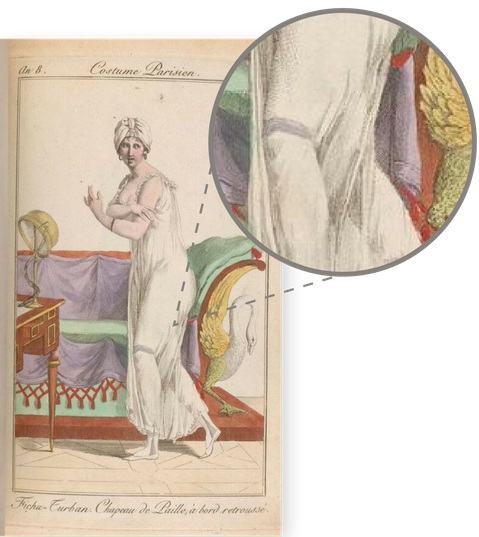 Yet the Journal des dames et des modes did not hesitate to depict what it noticed in Paris: women whose bodies were revealed, not reshaped or concealed, by their clothing.
Yet the Journal des dames et des modes did not hesitate to depict what it noticed in Paris: women whose bodies were revealed, not reshaped or concealed, by their clothing.
All of Europe paid attention. With the advent of the First Empire in France, however, the underwear pendulum began to swing back, and the Journal des dames et des modes with it, until by the 1820s, all European women were once again wearing underpinnings as restrictive as they had before 1795.
Image of 1750's stays courtesy of Museum of Fine Arts Boston.
Image of metal 'elastic' corset courtesy of The Metropolitan Museum of Art.